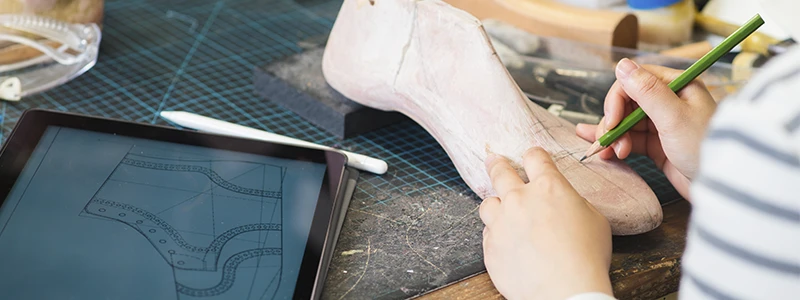How to become a Footwear Worker

Footwear workers make shoes, boots and sandals using hand and machine tools.
Personal requirements for a Footwear Worker
- Enjoy practical and manual activities
- Able to perform precise and detailed work
- Good eyesight (may be corrected)
- Normal colour vision
Education & Training for a Footwear Worker
You can work as a footwear worker without formal qualifications. You will probably get some informal training on the job.You can also become a footwear worker through an apprenticeship or traineeship. Entry requirements may vary, but employers generally require Year 10.
Duties & Tasks of a Footwear Worker
The footwear industry has become more mechanised and raw material passes through many stages before the finished article is produced. Different sets of specialised skills are required for each stage of production.:
Tasks
- Cuts and machines leather and synthetic shoe uppers, and makes shoes using moulded and cement construction techniques.
- Prepares machines for operation by selecting and installing attachments and components for specialised functions.
- Starts machines and monitors operation to detect faults and ensure effectiveness of operation.
- Examines finished products for defects and variations, reports faults in machines, and carries out quality control procedures.
- Sets and operates controls used to regulate processing operations.
Employment Opportunities for a Footwear Worker
Footwear workers are employed by shoe manufacturers. Most footwear establishments are small, employing fewer than 50 people.With experience and further training, it is possible to progress to technical or supervisory levels. You may also be able to move into areas of footwear design or into other areas of the footwear industry.
Specializations
Clicker
A clicker cuts pieces of leather or other material from patterns to form the upper parts of a shoe using a clicking press. Materials may be cut by hand in small factories.
Footwear Finisher
A footwear finisher trims, inks, polishes, sands and applies the maker's name.
Footwear Machinist
A footwear machinist uses various machines to stitch the upper parts of shoes and may decorate with stitching or punched holes.
Footwear Maker
A footwear maker assembles all types of footwear either by hand or machine. Uppers are attached to soles and heels by nailing, tacking, stitching, gluing or injection moulding.
Pattern Maker
A pattern maker designs and cuts a heavy paper pattern for a sample model shoe by hand or computer. Multiple copies are made from the master pattern to produce a range of shoes in different sizes and colours.
Stuffcutter
A stuffcutter cuts the bottom sections of the shoes, which includes the soles, heels and insoles, using a clicking press.
Tableworker
A tableworker prepares the uppers for the machinist to sew together and cleans, polishes and packs the completed item of footwear.
Footwear Worker
Footwear workers make shoes, boots and sandals using hand and machine tools.

Average age
50 years

Future Growth
Decline

Gender Share
66% female

Average full-time
40 hours

Weekly Pay
Unavailable

Skill level rating
Lower skill

Unemployment
Higher Unemployment

Full-Time Share
79% Full-Time

Employment Size
220 workers

Employment by state
ACT: 0.0%
NSW: 34.5%
NT: 0.0%
QLD: 10.0%
SA: 22.7%
TAS: 0.0%
VIC: 30.0%
WA: 2.7%
Age brackets
15-19: 0%
20-24: 1.4%
25-34: 9%
35-44: 16.7%
45-54: 41.9%
55-59: 14.3%
60-64: 13.3%
65 and Over: 3.3%
Education level
Advanced Diploma/Diploma: 5.8%
Bachelor degree: 1.7%
Certificate III/IV: 10.5%
Post Graduate/Graduate Diploma or Graduate Certificate: 0%
Year 10 and below: 41.9%
Year 11: 9.3%
Year 12: 30.8%


